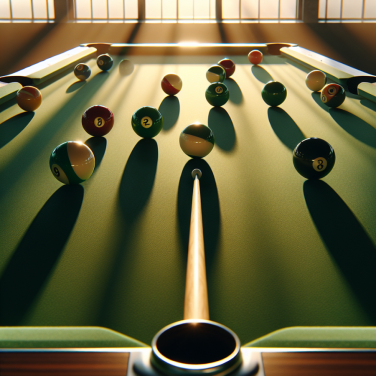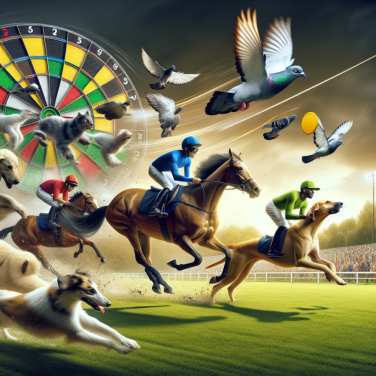Decoding the Relationship Between Art and Competitive Training
Art remains an influential partner in various fields, but the relationship it holds with competitive training may not be as obviously apparent as it is with fields such as design, therapy, or entertainment. This connection often manifests itself in ways that prove vital for competitive training methodology and performance.
The correlation between art and competitive training originates from their shared foundation on strategy, creativity, and individuality. Both pursuits compel their practitioners to continuously explore new and improved ways to gain an edge over their competition.
One might look at competitive training as an art form itself. Athletes create their own unique athletic performances through the development of specialized skills, rigorous training and by adopting a relentless pursuit of excellence. These performances, much like any artistic masterpiece, got their start from a blank canvas. The bodies of athletes are the paintbrush, and the sports field becomes their canvas.
The artistic side of training comes into play as training programs are designed. Every body type is unique, requires distinct approaches, and reacts differently to training stimuli. This calls for trainers to meticulously design training programs, much like how artists conceive their pieces. It challenges their creativity and flexibility to modify and improve them based on individual responses, forming an ever-evolving masterpiece that displays progress, strength, and individuality.
Athletes, like artists, coalesce their skills, emotions, focus, and dedication into creating exceptional works. They strive to express their skills creatively, strategically transforming and tweaking their routines and actions to adapt dynamically to any given situation. They continuously interpret and react, making split-second decisions that can make or break a performance, similar to how artists may make impromptive changes to their artworks based on their instincts and feelings at the moment.
Strategy, much like in any form of art, is a pivotal facet of competitive training. Through the implementation of systematic and strategic training plans, athletes can better navigate their journey towards their respective goals. This relates similarly to how artists strategically plan their conceptualization, materials, techniques, and compositions towards the creation of their masterpiece.
The applications and insights derived from art theory can be immensely beneficial to competitive training programs. Elements such as balance, proportion, rhythm, and order can be translated into training concepts, enhancing the development of athleticism and helping to achieve superior performance.
The artistry prevalent in competitive training often manifests in the performance itself. In sports like gymnastics, figure skating, or dance, there's an evident fusion of strategy, creativity, and athleticism.
Read also:
When Golf Grips Matter: Enhancing Your Swing Effectiveness
Navigating the Strategy for Successful Competitive Training: In-depth Analysis
Competitive training can be an ebook’s worth of content; it spans a multitude of variables. However, the core tenets can be distilled into a few critical factors. Whether it is training for a marathon, preparing for a competitive exam, honing your strategies for a chess championship, or getting ready for a business pitch, you need to strategically plan your training process to reach your top performance.
Fundamental to this, is understanding your competitive environment. A thorough analysis of the competition can often illuminate the training areas you need to prioritize. Identify your competitors' strengths and weaknesses and tailor your training accordingly. This extends beyond simply working harder; incorporating intelligence about your competition into your training brings an added edge. Rigorous practice based on this knowledge pushes you to work smarter, not just harder.
In addition, training should ideally be long-term focused, and a balance between specificity and variety needs to be struck. Too much specificity and you risk becoming too predictable and susceptible to new or unfamiliar challenges. On the flip side, if your training is overly varied, you risk becoming a jack-of-all-trades but mastering none. This is particularly crucial if you are preparing for a competition that calls for a specific knowledge base or skill set. Creating a training plan that prioritizes specific areas while also interspersing it with a variety of workouts keeps you stimulated and versatile.
Moreover, incorporating recovery strategies into your training is another factor that cannot be overemphasized. Overtraining can lead to injuries, burnout, and diminished results. This is why it is vitally important to include adequate rest and recovery into your training regime. In addition to physical recovery, mental well-being is also key in competitive training. Techniques such as mindfulness, stress-management, and maintaining a positive attitude can vastly enhance your performance levels.
Competitive training also significantly benefits from setting performance, process, and outcome goals. Performance goals focus on your own personal achievements and growth, rather than comparing yourself to others. This self-comparison leads to intrinsic motivation and helps you gauge your personal progress. Process goals involve strategies and techniques you will use during competition. These contribute to improving your skills and strengthening your weak-points. Finally, outcome goals focus on the result of the competition. Winning or achieving a certain rank is the ultimate goal. However, relying too heavily on outcome goals can lead to performance pressure and anxiety. Hence, it is important to balance all three types of goals during your training.




